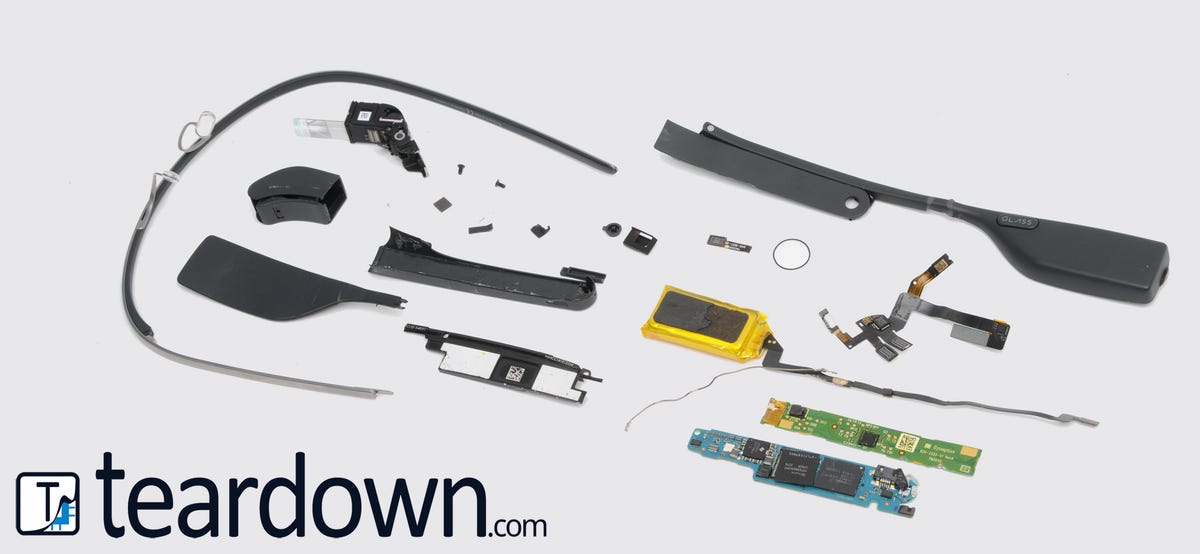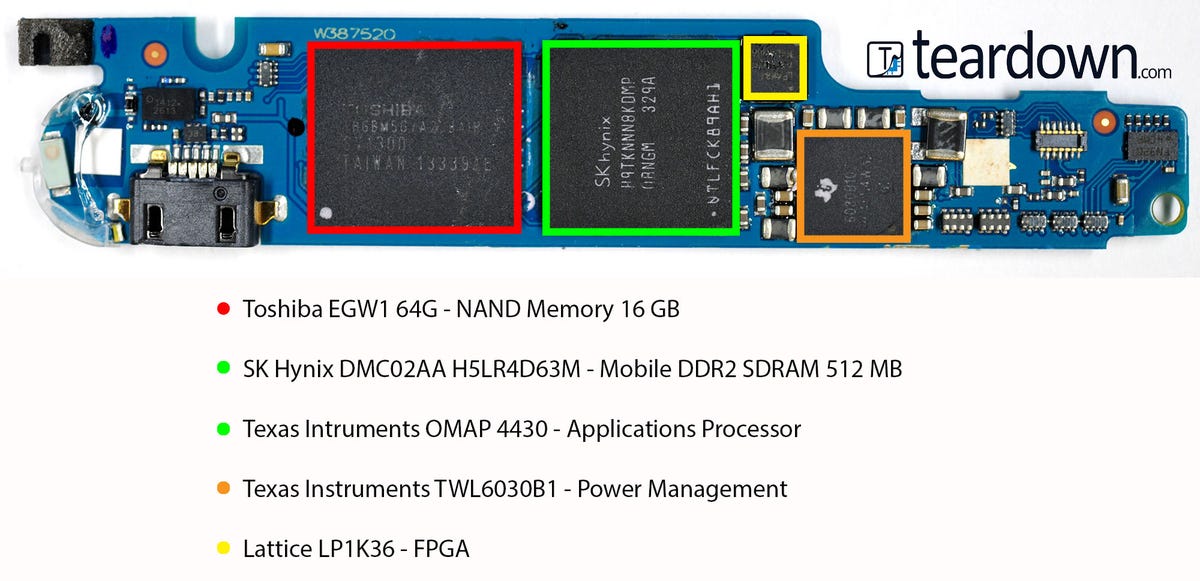
TechInsights
Google’s Glass wearable device carries a hefty $1,500 price tag if, like the ambitious early adopters called “explorers,” you’re one of the limited few who has had the opportunity to buy the device. The company recently held a one-day sale and sold out of every one of its five available colors of Glass in less than 12 hours.
However, it turns out the hardware behind Glass may only constitute about 5 percent of its cost, or around $80.
A report Wednesday from TechInsights, who runs Teardown.com, shows that the single most expensive part inside Glass is a Texas Instruments OMAP 4430 applications processor, which costs $13.96. Bundling that in with a $5.66 camera, a $3 display, and 16GB of NAND flash memory from Toshiba for $8.18 — among a series of other less expensive components — Glass parts come in at total of $79.78.
For now, this is just a rough estimate of the cost of the parts. Teardown.com will be doing a deeper inspection, the findings of which will be released soon, and expects the costs to change, though not dramatically. A Google spokesperson said the teardown estimate was wrong, according to The Wall Street Journal, and declined to comment further.


TechInsights
Of course, even if Glass’ components came in at under $100 — or even a few hundred dollars for that matter — that does not discount the amount of money Google has funneled into research and development at its Google X lab, as well as the design and branding costs built into the device. There is also the manufacturing element. Glass is made in California and its production involves cramming nearly a dozen components into something you wear on your face.
It’s worth noting that Google has said it plans to make Glass more affordable when the consumer model launches later this year — but has never offered an exact price.
If anything, this teardown may be reassuring to those who are interested in buying Glass if it’s more in the price range of a smartphone. If the current cost of a Glass Explorer prototype is due to its exclusive availability and low-volume manufacturing, Google has a strong incentive to bring the price down when it goes worldwide with its head-worn wearable.



